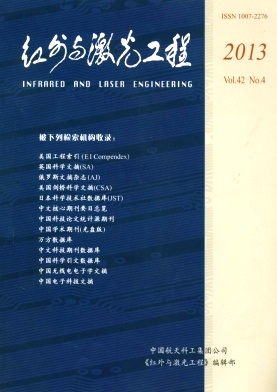Cai Yi, Wang Hongman, Qi Bo. Simulation of optimum algorithms with wavefront sensorless in satellite-to-ground laser communication[J]. Infrared and Laser Engineering, 2013, 42(4): 1063-1068.
| Citation:
|
Cai Yi, Wang Hongman, Qi Bo. Simulation of optimum algorithms with wavefront sensorless in satellite-to-ground laser communication[J]. Infrared and Laser Engineering, 2013, 42(4): 1063-1068.
|
Simulation of optimum algorithms with wavefront sensorless in satellite-to-ground laser communication
- 1.
Institute of Optics and Electronics,Chinese Academy of Sciences,Chengdu 610209,China;
- 2.
Key Laboratory of Beam Control,Chinese Academy of Sciences,Chengdu 610209,China;
- 3.
University of Chinese Academy of Sciences,Beijing 100049,China
- Received Date: 2012-09-05
- Rev Recd Date:
2012-10-09
- Publish Date:
2013-04-25
-
Abstract
In the system of satellite-to-ground laser communication, the atmosphere disturb reduces the quality of communication. Correcting disturb at the sink of the communication can improve the quality of communication. Sometimes, the sensor can't estimate the wave-front, so it needs to use wave-front sensor-less to correct the disturb. In order to compensate the disturb real-time, we simulated three improved optimum algorithms to correct the disturb, and compared the differences among Genetic algorithm(GA), sealing annealing algorithm(SA) and model-based approach algorithm in the convergence speed, precision, stability and the number of adding voltage to the deformed mirror. The simulation shows that: GA convergences very slowly, but can improve normalized intensity form 0.079 5 up to 0.99, It can be used in correcting the static aberration, the model-based approach algorithm only need two iterations to improve normalized intensity form 0.079 5 up to 0.862, It's proper for correcting the atmosphere disturb real-time.
-
References
|
[1]
|
|
|
[2]
|
Tian Xiaomei, Zheng Jinhua. Adaptive genetic algorithm based on parents' similarity[J]. Computer, 2005, 18: 61. (in Chinese) |
|
[3]
|
|
|
[4]
|
Yang Ping, Ao Mingwu. Adaptive optics genetic algorithm based on zernike mode coefficient[J]. Chinese Journal of Lasers, 2008, 3(35): 3. (in Chinese) |
|
[5]
|
|
|
[6]
|
Wang Yingnian. The research and application of genetic algorithm[D]., 2009, 8: 4-14. (in Chinese) |
|
[7]
|
|
|
[8]
|
Rao Ruizhong, Huang Honghua, Huang Yinbo, et al. Analysis of the influence of the optical property of atmosphere on target imaging[J]. Infrared and Laser Engineering, 2002, 6(31): 3. (in Chinese) |
|
[9]
|
|
|
[10]
|
Tan Zuojun, Chen Haiqing, Kang Jingran, et al, Experiment on correction ability to the static wavefront aberration of MEMS-DMs[J]. Infrared and Laser Engineering, 2008, 12(37): 6. (in Chinese) |
|
[11]
|
Zhu Haodong, Zhong Yong. A kind of renewed simulated annealing algorithm[J]. Computer Technology and Development, 2009, 6(19): 6. (in Chinese) |
|
[12]
|
|
|
[13]
|
|
|
[14]
|
El-Agmy R, Bulte H. Adaptive beam profile control using a simulated annealing algorithm[J]. Optics Express, 2005, 8(8): 13-16. |
|
[15]
|
|
|
[16]
|
Booth M J. Wave-front sensor-less adaptive optics: a model-based approach using sphere patching[J]. Optics Express, 2006, 2(20): 14-4. |
|
[17]
|
Song H, Fraanje R. Model-based aberration correction in closed-loop wave-front-sensor-less adaptive optics system[J]. Optics Express, 2010, 12(8): 18-23. |
-
-
Proportional views

-









 DownLoad:
DownLoad: